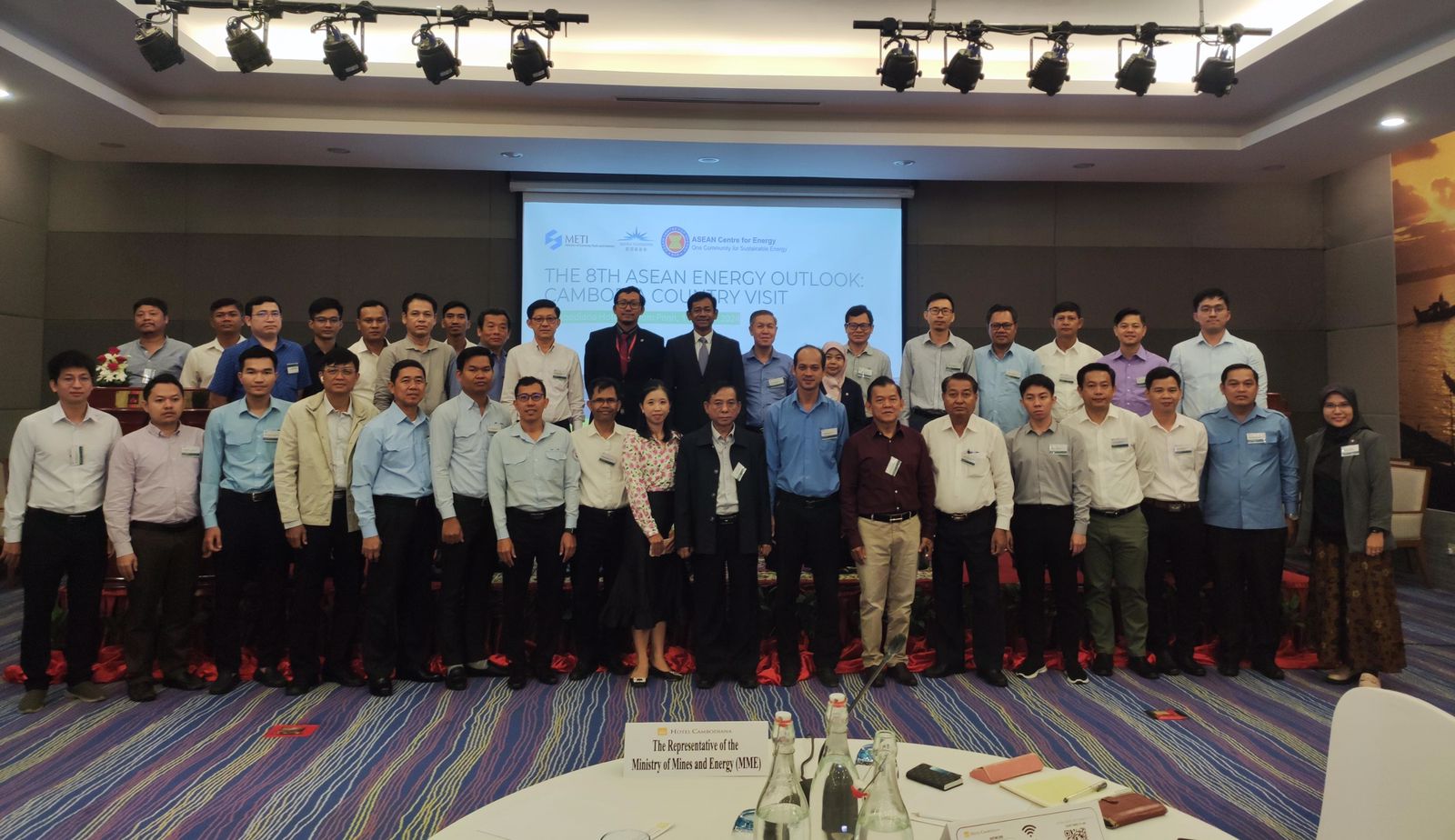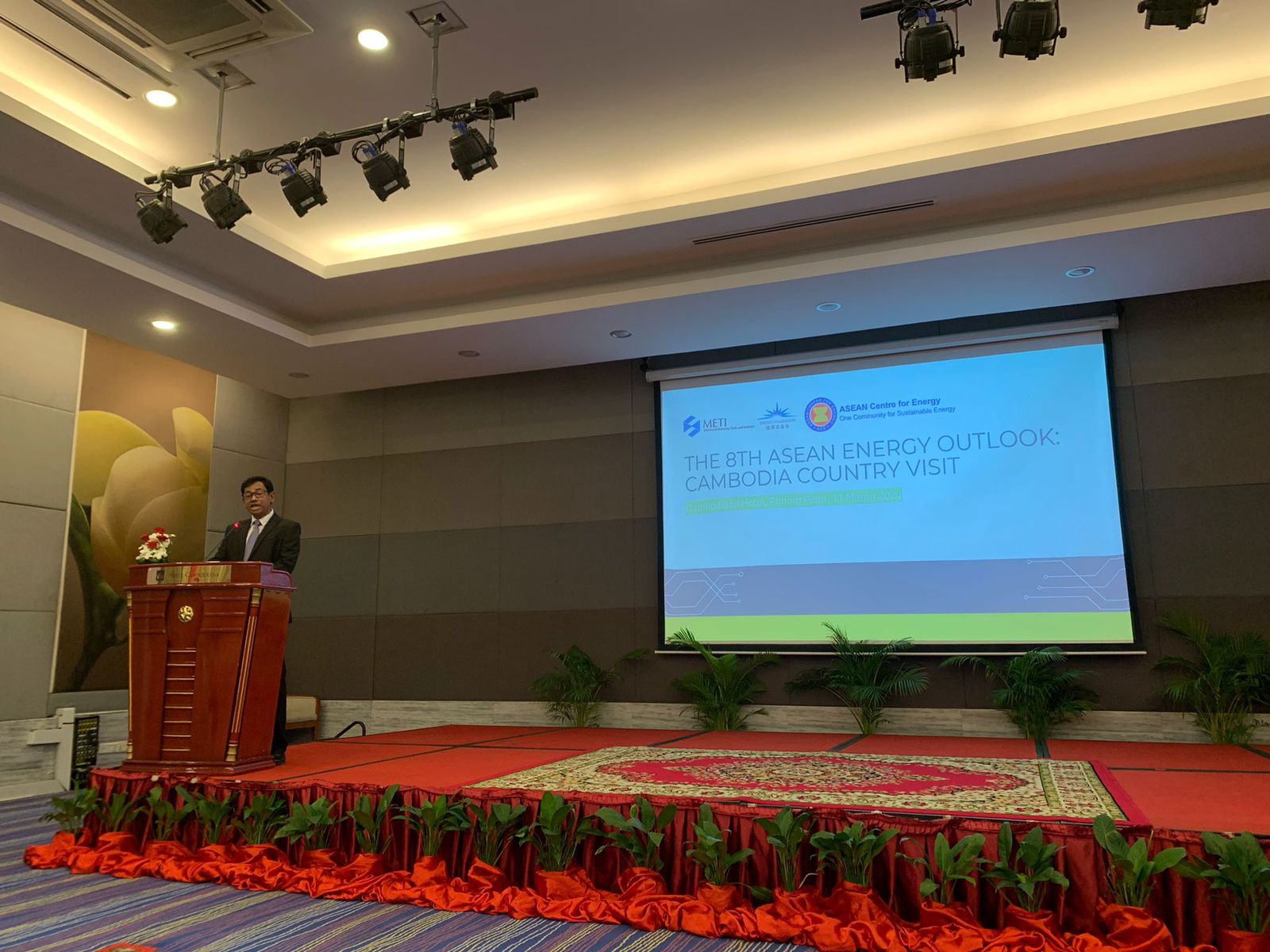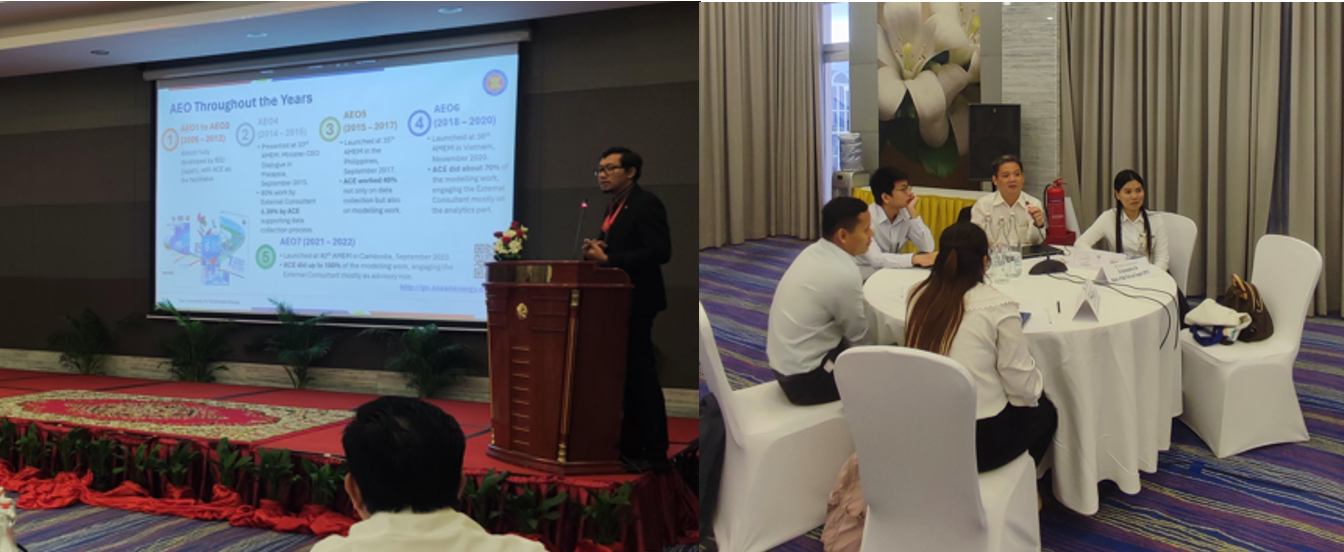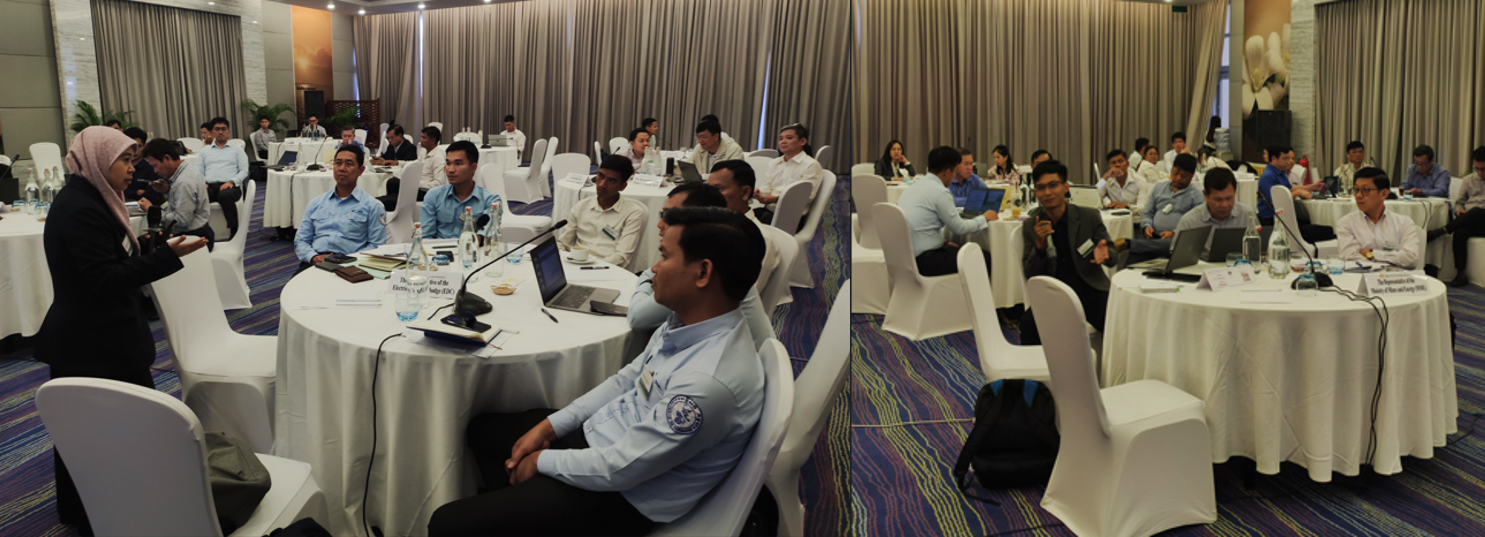Menu

As part of the 8th ASEAN Energy Outlook (AEO8) development, the ASEAN CEntre for Energy (ACE) is conducting country visits to ten ASEAN Member States (AMS) to share and consult on the initial modelling results from January until March 2024. During these visits, ACE invites energy officials and relevant stakeholders from AMS to gain additional input and check for the modelling, such as detailed data, assumptions, and initial findings. On the 11th of March 2024, ACE conducted the AEO8 Country Visit to Cambodia, the eighth event from the series.

Photo 1. Opening Remarks by H.E. Mr Victor Jona, SOE Leader of Cambodia
H.E. Mr Victor Jona, SOE Leader of Cambodia, gave the opening remark. He highlighted that the increasing regional energy demand will require a balance in energy trilemma on security, affordability, and environmental sustainability. Cambodia will always support the development of the ASEAN Energy Outlook to accelerate the economic growth and integration of the ASEAN region by providing, engaging, and implementing relevant pathways from expertise to ensure the necessary energy policies and programs are in harmony with the current ASEAN targets.
The second opening remark was delivered by Dr. Zulfikar Yurnaidi, Manager of Energy Modelling and Policy Planning (MPP) of ACE. He noted the importance of Cambodia in the development of the ASEAN Energy Outlook (AEO), where the previous AEO (the AEO7) was launched in the 40th ASEAN Minister on Energy Meeting (AMEM) in Cambodia as the former ASEAN Chairmanship. He also mentioned Cambodia’s strong commitment to energy transition, including launching a new national energy policy as one of the critical milestones in ASEAN in achieving regional energy targets.

Photo 2. Discussion on AEO8 Progress Update, led by Dr. Zulfikar Yurnaidi
As with all country visits, the first presentation is about the current progress of AEO8, given by Dr. Zulfikar Yurnaidi. The presentation showed the planned scenarios and structures of the AEO8 Report. The next session discussed the upcoming cycle of the ASEAN Plan of Action for Energy Cooperation (APAEC), also led by Dr. Zulfikar Yurnaidi. As the current phase is due to end in 2025, this year’s AEO8 country visit allowed ACE to receive input about regional targets and aspirations from AMS and then forward it to the APAEC Drafting Committee (ADC). Cambodia’s participants suggested that energy security should balance with decarbonisation efforts towards a sustainable and low-carbon economy. Another input was expanding various clean energy and technologies, including critical minerals and waste management, to achieve regional energy targets by strengthening regional energy cooperation.
The following session was a presentation about LEAP, the modelling software used for AEO8, given by Dr. Zulfikar Yurnaidi. This demonstration gave participants insight into how the data was used to create the projections in AEO8, as well as the software’s ability, requirements, and limitations.
The afternoon session focused on the data and initial findings of the modelling. During the data discussion given by Silvira Ayu Rosalia, Data Statistician of MPP at ACE, the officials were offered time to approve the external sources and assumptions used to fill up the missing information from the required Cambodia’s energy data, such as the Energy Balance Table (EBT). ACE also inquired about current policies and targets and if any new updates could be used for AEO8. The meeting noted two recently launched important energy policies of Cambodia: the Power Development Masterplan (PDP) 2022-2040 and the National Energy Efficiency Policy (NEEP) 2022-2030.

Photo 3. Discussion on AEO8 Initial Findings, led by Dr. Ambiyah Abdullah
The next session presented the initial findings of the Baseline Scenario and the AMS Target Scenario (ATS), which were moderated by Dr. Ambiyah Abdullah, Senior Research Analyst of MPP at ACE. The presentation discussed the assumptions, scenarios, and methodology in more detail. The projections of energy demand and supply in Cambodia were shown for officials to review and address any concerns. A cost and emission comparison between the two scenarios was also given. Among the inputs received were the updated investment and cost data under the new PDP, where Cambodia’s PDP early capacity addition build needs more initial investments.
The meeting then continued with the last discussion about the two other scenarios: the Regional Approach Scenario (RAS) and the Carbon Neutrality Scenario (CNS), which was also led by Dr. Ambiyah Abdullah. The group discussed specifically net-zero technologies that Cambodia would foresee in the future, such as hydrogen and energy storage systems.
Ending the country visit, Dr. Ambiyah Abdullah gave a sharing session about energy financing. It focuses on the needs, trends, and challenges of energy investment in ASEAN in general, and in Cambodia in particular. With the target to increase 25% renewable energy in the power mix (generation capacity) by 2030 (solar, wind, hydro, biomass), the Cambodian government offered several energy financing initiatives, such as the green microfinance fund. Active participation was observed as the audience deep-dived into the situation in their country.
—
AEO8 development is supported by several partners, including the Ministry of Economy, Trade and Industry (METI) Japan, the Norwegian Government through the ASEAN Climate Change and Energy Project (ACCEPT) Phase II, the USAID through Smart Power Programme (SPP), Australian Government through Partnerships for Infrastructure (P4I), Energy Foundation China, and many technical partners.
